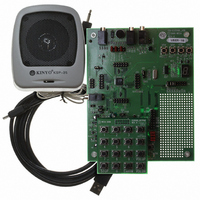ISD-ES15100_USB Nuvoton Technology Corporation of America, ISD-ES15100_USB Datasheet - Page 23

ISD-ES15100_USB
Manufacturer Part Number
ISD-ES15100_USB
Description
BOARD EVALUATION USB FOR I15100
Manufacturer
Nuvoton Technology Corporation of America
Series
ChipCorder®r
Specifications of ISD-ES15100_USB
Main Purpose
Audio, Voice Record/Playback
Embedded
No
Utilized Ic / Part
ISD15102, 04, 08, 16, 32
Primary Attributes
ASIC, 2 ~ 16 Minutes, Up to 48kHz, Class D Amp, Line/Digital/Mic Input
Secondary Attributes
Graphic User Interface
Lead Free Status / RoHS Status
Not applicable / Not applicable
When the ISD15100 EV board is connected to PC, two extra screens show up:
4.1
ISD15100 provides two message recording mechanisms:
The ‘Play Msg At’ command (C) plays a message at the user-specified address. Users can play a
message from the middle by specifying an offset (D). One offset is one memory sector, which is about
one second based on 8kHz 4-bit ADPCM. ISD15100 does not provide a PAUSE command; however,
a PAUSE command can be easily done by toggling between ‘Stop’ and ‘Play Msg At’ with an offset.
To erase a message, simply specify the address and then click on ‘Erase Msg At’ (E). Addresses of
recorded messages are shown on the Message List. (F)
‘Get Msg List’ (G) is not an ISD15100 command. It is indeed a bunch of digital-read commands used
to scan the memory for messages. The first byte of each memory sector shows whether or not a
beginning of message is inside the memory sector.
VM (H) & VP (I) sub-screens show users the VM/VP tags and indexes that they are working on. It
shows up only if the loaded project on VPE is consistent with the project inside the EV board. When
the ISD15100 is powered up, VPE automatically reads back checksum from the EV board and
compares it with the loaded project. If the two checksums match, the indexes and tags show up. The
checksum incorporates the projects details, date of creation, VPE version, and user ID.
To execute a VM or to play a VP, simply click on the VM/VP sub-screens to get the index, and then
click on ‘Execute VM’ (J) or ‘Play VP’ (K).
VM and VP are index based, which means to execute a VM or to play a VP the microcontroller only
sends a simple command followed by the index. It is address-free! Please note that VM and VP share
the indexes, and it always starts from VM. For example, if a project has three VMs and four VPs, then
the indexes 0 ~ 2 belong to VMs, and the indexes 3 ~ 6 belong to VPs.
4.
•
•
•
•
USB Emulation
Audio Cmds:
Digital Cmds:
Audio Cmds
‘Record Msg’ (A):
‘Record Msg At’ (B):
o
o
o
o
Where you can emulate the ISD15100 play and record commands like executing
voice macros, erasing recorded messages etc.
Where you can emulate the ISD15100 digital commands like downloading a project,
reading back for verification etc.
Record a message without specifying address. ISD15100 automatically searches for
available memory sectors starting from the RMP (Recording Memory Pointer) for the
message recordings. When a ‘Stop’ command is issued to finish the recording, or the
recording is stopped due to memory full, VPE automatically reads back the recorded
message address and length.
Record a message at the user-specified address, which is reserved in advance. By
default the reserved messages are allocated before the RMP. Since the addresses of
Reserved Messages are allocated in advance, there is no need to read back the
recorded message address. Reserved Message is especially useful for a predefined
scenario.
Publication Release Date: May 21, 2008
PRELIMINARY
Revision 151.003
23









